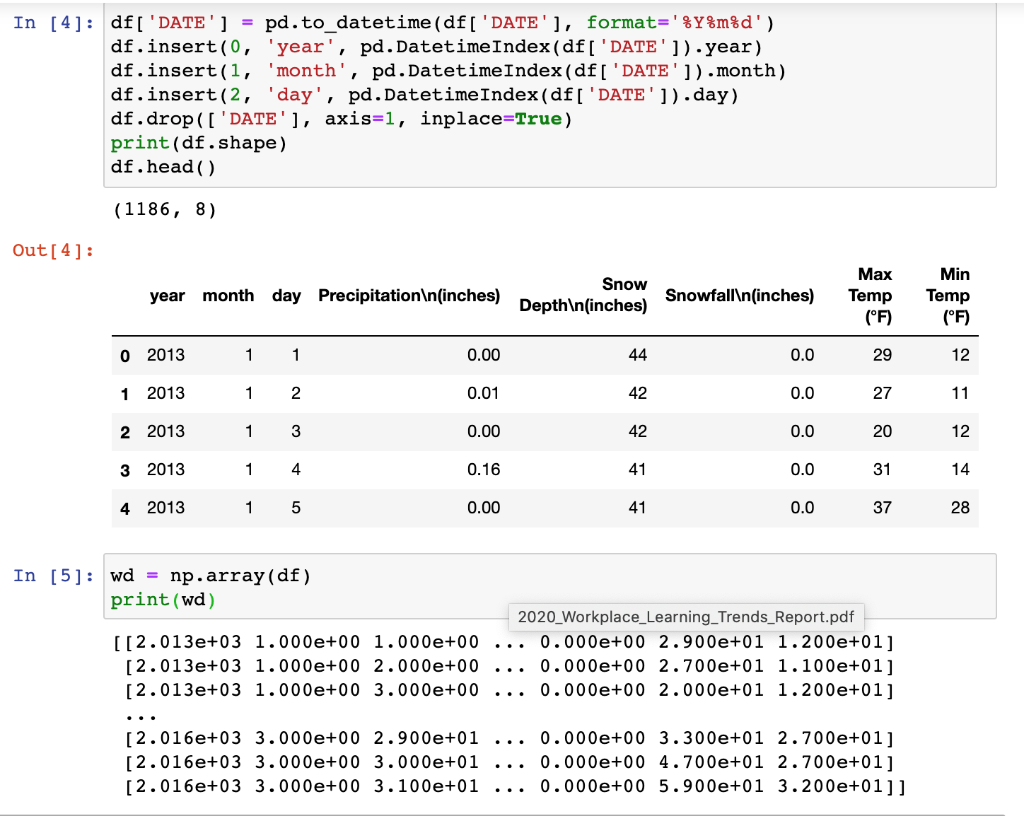
- #How to combine two arrays in python jupyter notebook how to#
- #How to combine two arrays in python jupyter notebook install#
cells with GAMS syntax, using the Jupyter magic facility (first line in a cell is %%gams). Cells can be turned into GAMS cells, i.e. So by default the notebook cells are Python cells.

The GAMS Jupyter Notebook builds on top of the Python 3 kernel. The Tutorial in this documentation is derived from the Introduction.ipynb notebook. The notebooks Millco.ipynb and Introduction.ipynb located in apifiles/Python/jupyter_examples are good starting points to get familiar with Jupyter notebooks and GAMS.
#How to combine two arrays in python jupyter notebook install#
Python /Library/Frameworks/amework/Resources/apifiles/Python/api_38/setup.py build -b $TMPDIR/build install MacOS: conda create -n gmsjupyter python=3.8 jupyterlab pandas tabulate matplotlib Python setup.py install (In case of permission problems run the following instead: python setup.py build -b $TMPDIR/build install)Ĭd ~/jupyter (or another directory that should be used for your notebooks) Linux: conda create -n gmsjupyter python=3.8 jupyterlab pandas tabulate matplotlibĬd ~/gams/gams33.1_linux_圆4_64_sfx/apifiles/Python/api_38 Jupyter notebook (this will start the jupyter notebook server) Python setup.py install (In case of permission problems run the following instead: python setup.py build -b %TEMP%\build install)Ĭd C:\jupyter (or another directory that should be used for your notebooks) Windows: conda create -n gmsjupyter python=3.8 jupyterlab pandas tabulate matplotlib
#How to combine two arrays in python jupyter notebook how to#
The following code section shows how to create and set up a Miniconda Python environment for GAMS Jupyter notebooks: In addition to the GAMS Python API collection, the packages jupyterlab, matplotlib, pandas, and tabulate are required in order to enable GAMS Jupyter Notebooks and to run the provided examples which are located in apifiles/Python/jupyter_examples. While any Python >=3.6 installation is supported, we recommend the use of Anaconda or Miniconda Python distributions. We recommend to follow the steps below which are specifically tailored for getting started with GAMS Jupyter notebooks. The first step in getting started with GAMS Jupyter Notebooks is to make your Python 3 installation aware of the GAMS Python API collection described in the Getting started section of the API tutorial. Combining GAMS and Python in a notebook it is relatively easy to tell an optimization story with text, data, graphs, math, and models. The former works great with well structured data and optimization models, while the latter is very rich in features to retrieve, manipulate, and visualize data that comes in all sort of ways. Notebooks allow you to combine GAMS and Python. If you just want to learn GAMS there are probably better ways doing this. GAMS Jupyter Notebooks allow to use notebook technology in combination with GAMS. We'll start by importing necessary functions which will help us creates widgets UI.Note This feature is currently in beta status. We'll then learn in the future about customizing these widgets further. It's a very good way to start using ipywidgets. It'll create widgets by itself by looking at parameters of functions and create widgets UI with all parameters represented as one widget. Ipywidgets provides a list of functions which can let us create widgets UI for any of our existing function. Ipywidgets can be easily integrated with a lot of other Python libraries like matplotlib, holoviews, bokeh, bqplot, ipyvolume, ipyleaflet, ipywebrtc, ipythreejs and many more.

This way you won't need to learn javascript and continue to use python by just learning ipywidgets.Įvery widget generated by ipywidgets consists of two components behind the scene: It'll let you code in pure python and will generate an interactive widget for you using javascript underneath. It provides a list of widgets quite common in web apps and dashboards like dropdown, checkbox, radio buttons, and many more. Python has a library called ipywidgets which can help you with that. Applications and dashboards designed as web app quite commonly use javascript for interactivity purposes which requires quite a good amount of javascript learning.īut what if you are a python developer and do not want to invest time in learning another programming language but still want to build interactive apps and dashboards?


Old ways of creating static applications and dashboards won't help much in this fierce competition of being everything interactive. It has become a need of an hour to create interactive apps and dashboards so that others can analyze further using interactive widgets. Interactive dashboards and applications are getting quite common day by day. Jupyter notebook has become very famous nowadays and has been used by data scientists, researchers, students, developers worldwide for doing data analysis. Interactive Widgets in Jupyter Notebook using ipywidgets ¶


 0 kommentar(er)
0 kommentar(er)
